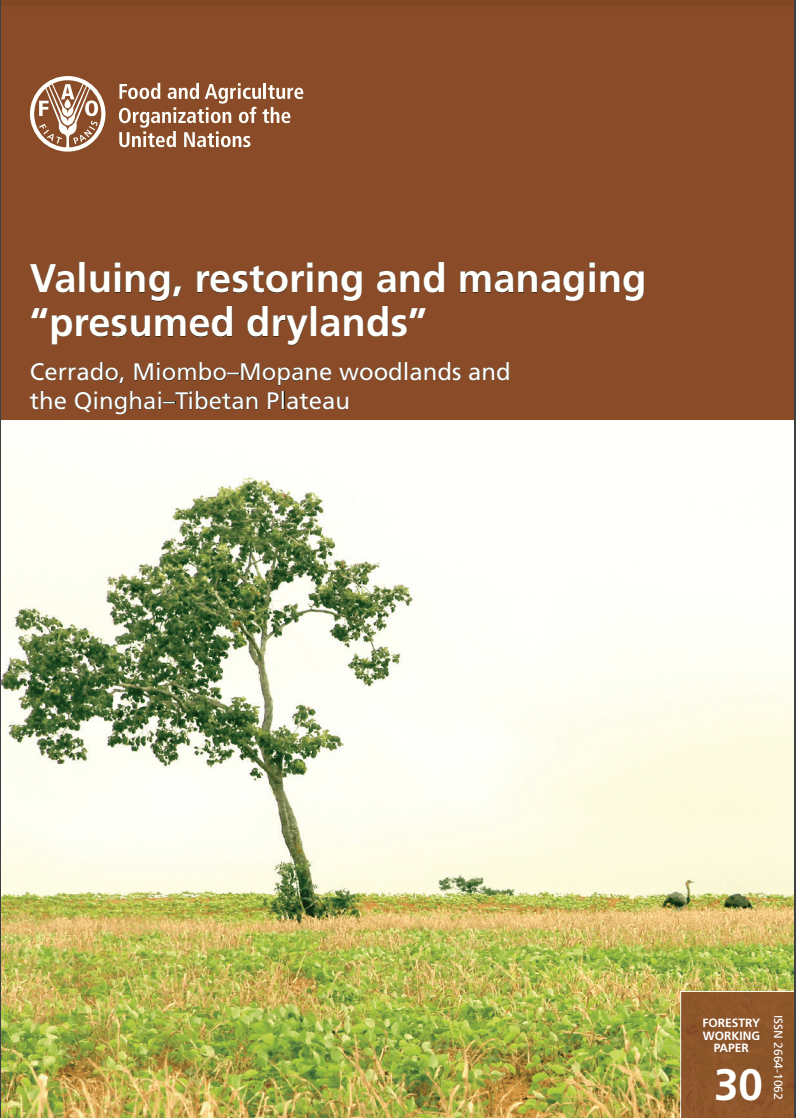The study Valuing, restoring and managing presumed drylands: Cerrado, Miombo–Mopane woodlands and the Qinghai–Tibetan Plateau confirms the existence of 1 075 million hectares of presumed drylands that are under threat from unsustainable use and climate change. This is in addition to the 6.1 billion hectares of official drylands that already cover 41 percent of the planet’s land surface and are home to 2 billion people.
All these areas contain high levels of biodiversity and are home to a large number of people reliant on agriculture to sustain their livelihoods, this is why it’s so important to research, analyse and work to protect them. The report contains concrete information on the environmental and ecological value of these dryland areas, and key recommendations for actions to limit land degradation, sustain biodiversity and mitigate climate change.
An increasing body of evidence is showing that agroforestry involving deliberate planting of trees or farmer-managed natural regeneration (FMNR) are effective strategies for improving land productivity. Tree shade can significantly reduce temperature and soil evaporation, leading to higher soil moisture with major benefits for crop performance. Trees also contribute to soil carbon, improve soil humidity and nitrogen fixation, which enhances soil structure and increases the ability of crops to take up nutrients. As a result, these processes lead to higher crop yields. In Niger, Mali and Burkina Faso, for example, the presence of mature fertilizer trees explained 15–30 percent alone of cereal yields.


No Comments
Sorry, the comment form is closed at this time.